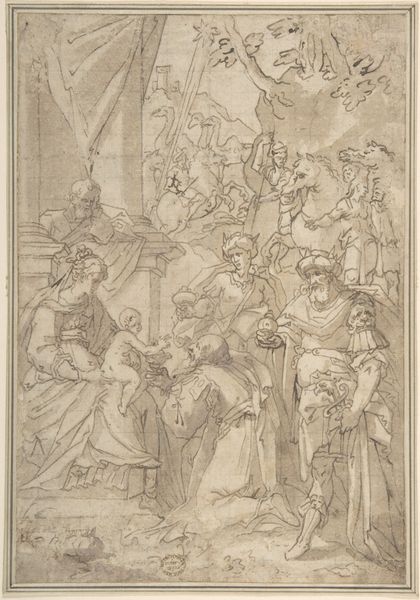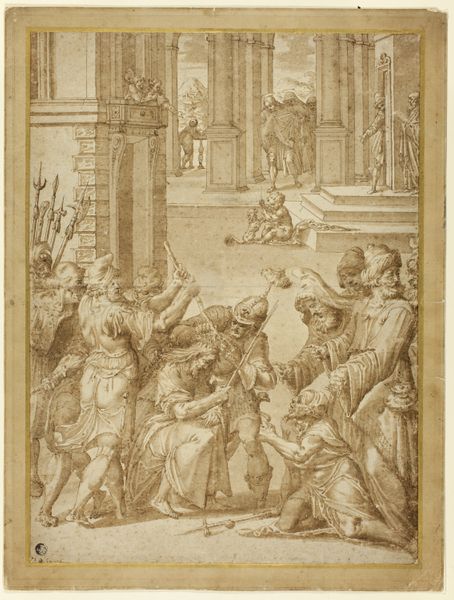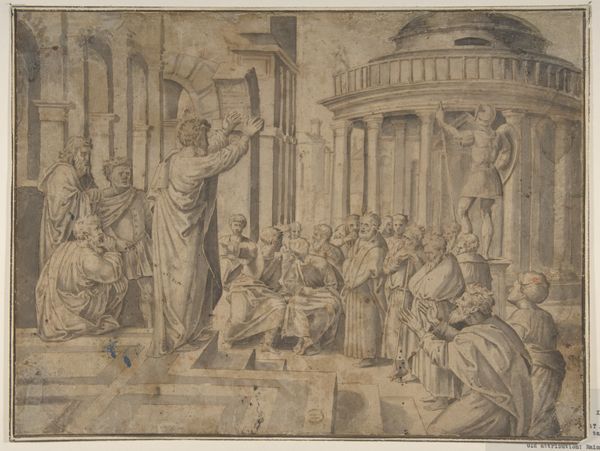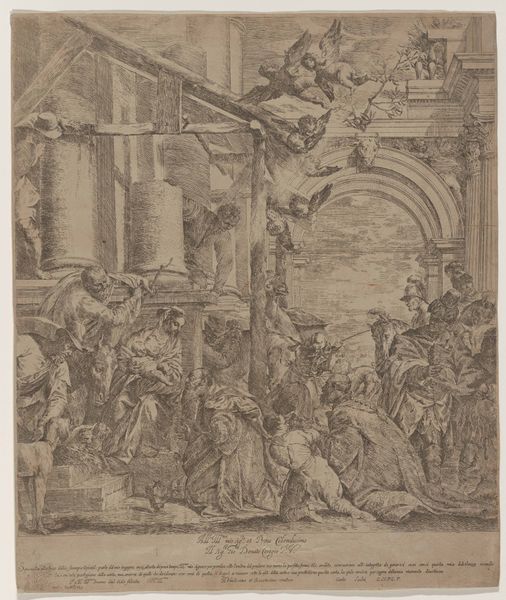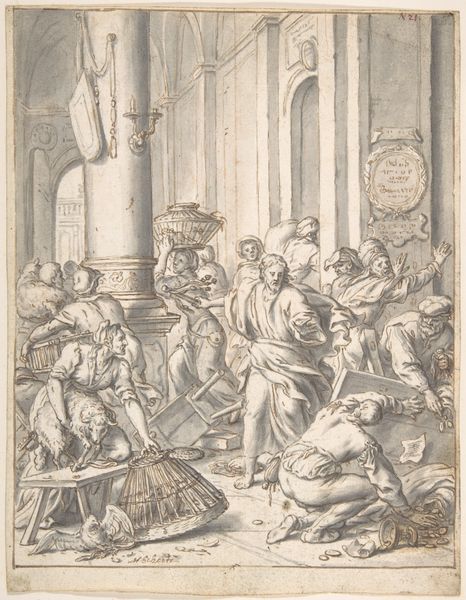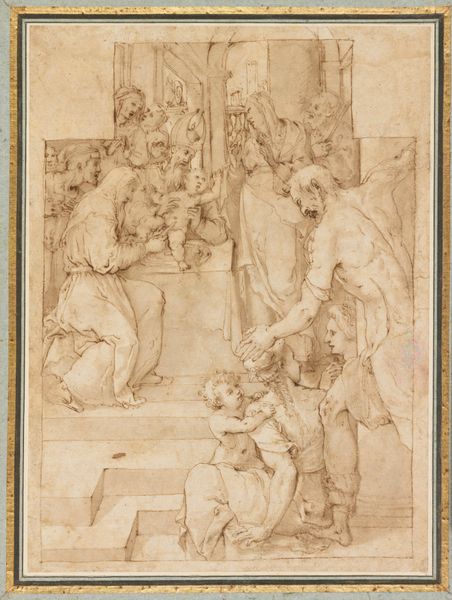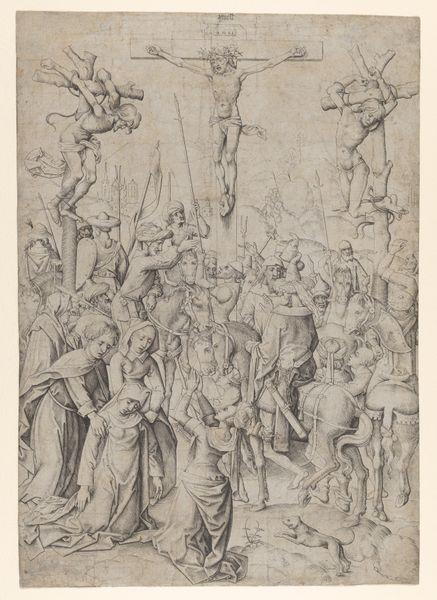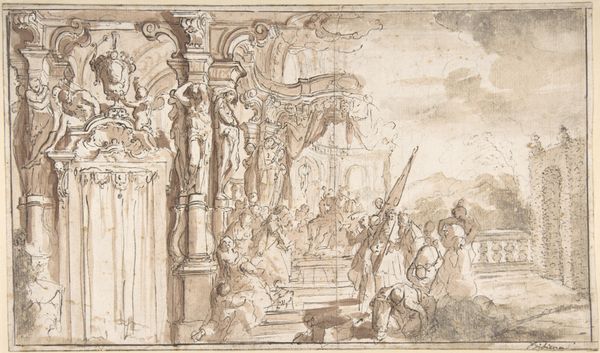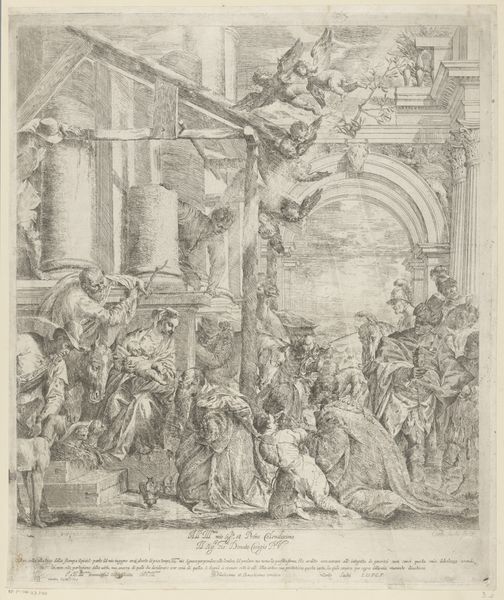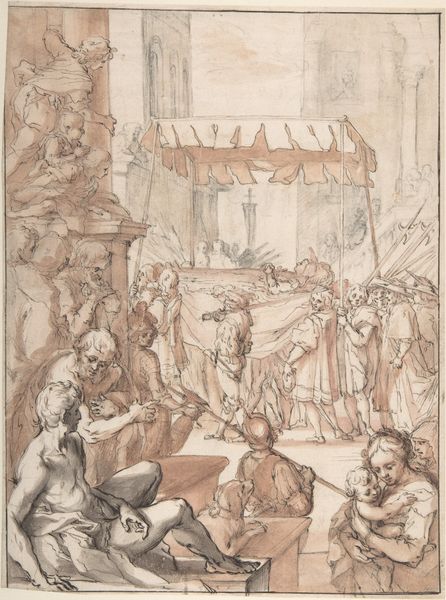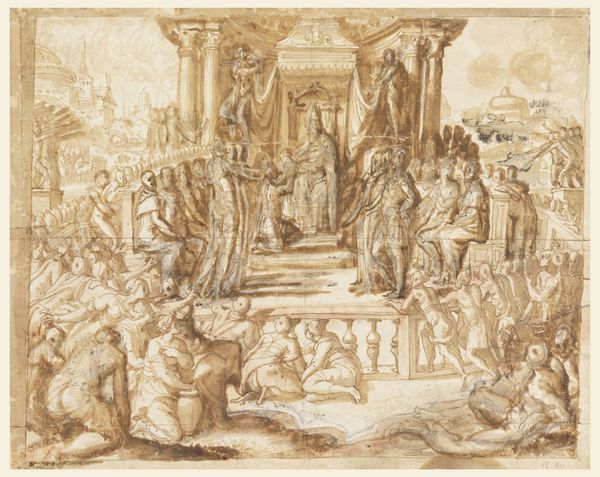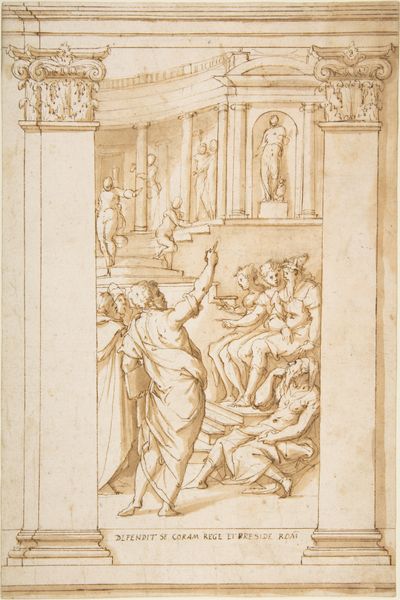
drawing, ink
#
drawing
#
figuration
#
11_renaissance
#
ink
#
history-painting
Dimensions: 165 mm (height) x 136 mm (width) (bladmaal)
Curator: Let’s turn our attention to this drawing entitled “Mucius Scaevola before Porsenna." Created sometime between 1481 and 1537 by an anonymous artist, it employs ink as its primary medium. What’s your initial response? Editor: The composition really strikes me first – this assembly of figures rendered with such urgency in line, creating a dynamic and charged scene. It feels theatrical, even a bit unsettling with that central, almost defiant, figure. Curator: It is a compelling scene! The process of creating this piece, through detailed line work, gives it a unique quality compared to a finished painting. Think about the labor involved, the careful application of ink to achieve these varying tones and textures. Editor: Absolutely. And consider the symbolism within that process – ink, traditionally associated with writing and record-keeping, used here to depict a historical narrative. The Roman story itself adds weight – Mucius Scaevola, a patriot who thrust his hand into fire to prove his courage to King Porsenna. Curator: It's not merely an illustration of an event; it's an engagement with the cultural and political ideals of the Renaissance through a classical lens. The choice of materials – ink on paper – speaks to a culture where these narratives were carefully constructed and disseminated, potentially through printmaking. Editor: That resonates. The fiery act Mucius commits speaks volumes about Roman ideals of sacrifice and heroism. Porsenna is in many ways an emblem of Etruscan power, here rendered within this dynamic drawing in such a careful manner. The event became a potent emblem in visual culture across centuries. Curator: Thinking materially again, I wonder about the circulation of this artwork, how its message might have reached different audiences through reproduction or study. These images informed understanding of courage. Editor: The echoes of Roman virtue, the layers of meaning… it certainly encourages deeper contemplation on bravery, and resistance as well as a study in artistic interpretation of that resistance and sacrifice across cultures and centuries. Curator: Agreed. The artist uses these historical themes to give access to new ideas, while reflecting and creating culture around consumption. Editor: Indeed, a visual narrative packed with a punch and historical as well as social questions of value.
Comments
No comments
Be the first to comment and join the conversation on the ultimate creative platform.
